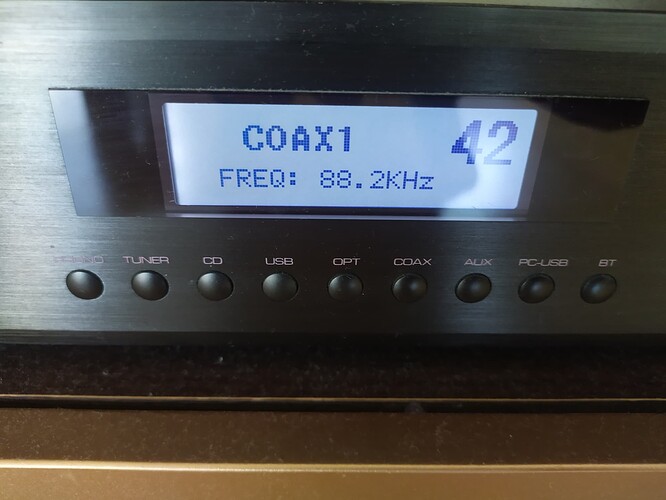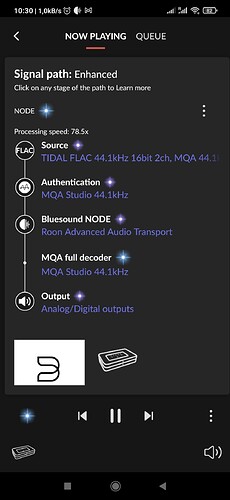1st MQA unfold. 44.1kHz in Roon, 88.2kHz on DAC input. USB Audio Pro is also showing 88.2 for the same track.
This is correct. An MQA 44.1 kHz source will always be decoded to 88.2 kHz; it’s still an MQA Studio 44.1 kHz recording.
In this case Roon is not doing any unfolding as the DAC is set as a full decoder and doing both the decoding and rendering. If you set Roon to do the first unfold you will see it doing that in the signal path and the DAC will do the rendering only.
Yes, the Bluesound Node (full decoder) is doing the decode and render; the connected DAC via S/PDIF (coax) indicates 88.2 kHz.
Have made some deeper analysis and can state that it happens only with Tidal MQA 44.1 16bit tracks whether Node is set to decoder/renderer mode or not (renderer only).
Because Roon detects these tracks as FLAC 44.1 16 bit, MQA 44.1
But DAC and USB AP are showing 88.2 when playing these tracks.
For FLAC 48 24 bit MQA 96 and FLAC 44.1 24 bit MQA 88.2 - Roon, DAC and USB Audio Pro are showing the same sample rate after 1st unfold (96 kHz and 88.2 kHz respectively).
DSP/upsampling in Roon is off all the time.
The first “unfold” will always result in 88.2 kHz or 96 kHz streams. This may be performed by Roon, when core decoder is enabled, or using full decoder hardware such as the Node.
What kind of additional value MQA technology may add to 44.1/16 source signal? Do we have just oversampling case with 44.1/16 MQA tracks?
Thank you. But it is more about marketing than technology.
An oversampling is not a bad thing. And I love MQA files sound (it is expressive and vivid) and suppose that digits on DAC screen are of secondary importance.
I guess if we are playing with sampling digits / full picture of signal path / origami / etc it is worth to understand if this play has any sense.
I still have a strong feeling that sometimes we are listening to the Pied Piper in disguise)


